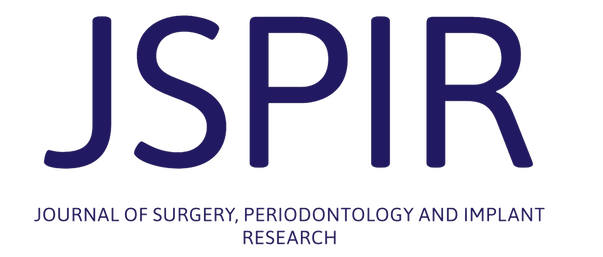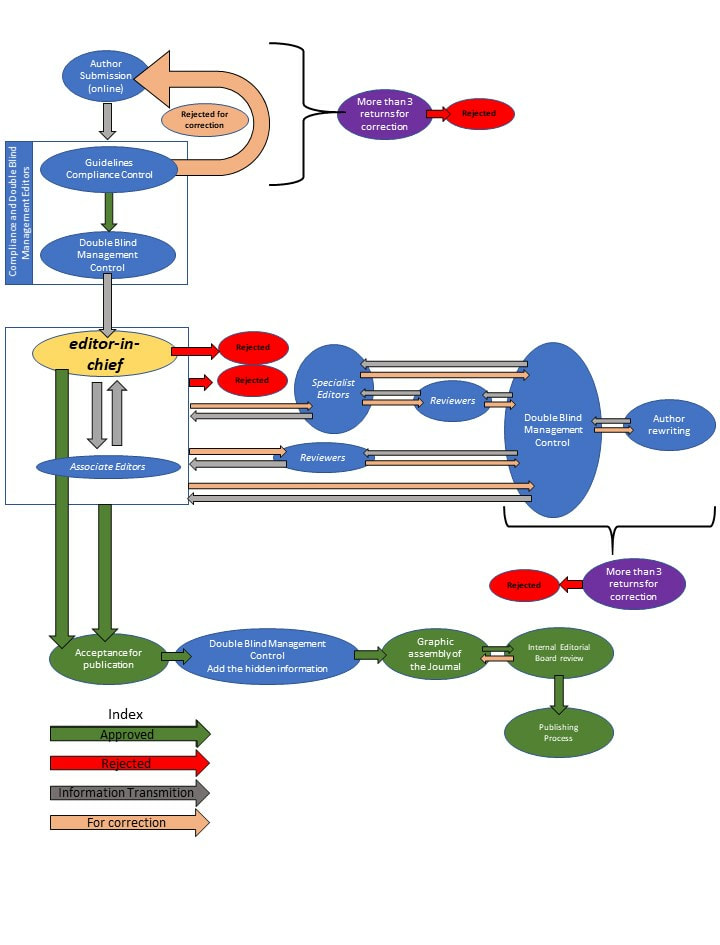Peer Review Process
Like most scientific medical journals, editors and reviewers are organized in a very unique way. The contents of the journal are submitted by authors (Dentists, Physicians, Stomatologists, Maxillo-Facial doctors and other researchers). Every author submitting his article/content will have to transfer the copyright to the journal, however, compliance with original and reliable content will be the responsibility of the author.
- Online Submission
- The author submits the manuscript through the submission form via online to the department of compliance and double-blind management editors.
- The system sends an autoresponder to the author indicating the receipt of the manuscript.
- Compliance and double-blind management editors
- Guidelines compliance control
- Verification of compliance with the guidelines.
- If the manuscript does not comply with any of the guidelines, it will be returned to the author for correction, being limited to a maximum of three correction requests, before being rejected for non-compliance with the publication rules.
- If the manuscript meets the guidelines, it will switch to double-blind management control.
- Verification of compliance with the guidelines.
- Double-Blind Management Control:
- Concealment of all information that identifies the author of the manuscript as affiliation, addresses (including e-mail addresses), acknowledgements, conflicts of interest.
- Assigns a code/number to the manuscript.
- After processing the manuscript, it is sent to editor-in-chief.
- Approval and revision
- Editor-in-Chief and Associate Editors: Checking the scope and plagiarism of the manuscript.
- The Manuscript can:
- be accepted directly for publication by editor-in-chief;
- be rejected directly by editor-in-chief;
- be accepted directly for publication by a combined decision between editor-in-chief and Associate Editors;
- be rejected by the combined decision between editor-in-chief and associate editors;
- be accepted by a combined decision between the editor-in-chief and Associate Editors, but subject to prior correction.
- The suggestion for correction can be made directly by the editor-in-chief and/or associate editors. A reviewer (internal or external with competence for the subject matter covered in the manuscript) or a specialist editor may also be suggested by the editor-in-chief for the corrections suggestion. A specialist editor may invite a reviewer for full or partial correction of the manuscript.
- The suggestion for correction of the manuscript is sent to the double-blind management control, returning to the author so that it can make the necessary changes. The Author checks the review and suggestions requested and submit once again to the double-blind management control, which sends to the editor-in-chief and/or associate editors, reviewers, or specialist editors for re-evaluation. This process will be limited to a maximum of three requests for correction to the author before being rejected.
- Final approval and publication
- The manuscript being in compliance for publication is sent to Double-blind Management Control to add all information that identifies the author in the manuscript as affiliation, addresses (including e-mail addresses), acknowledgements, conflicts of interest.
- The DOI (Digital Object Identifier) code is assigned, through the partnership with the Crossref Association.
- The manuscript is finalized with the necessary information in an isolated way and also integrated and structured in the publication scheme of the journal.
- Later it will be placed online and/or Printing.

